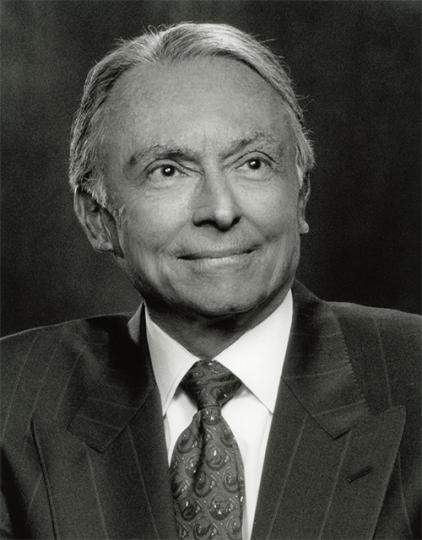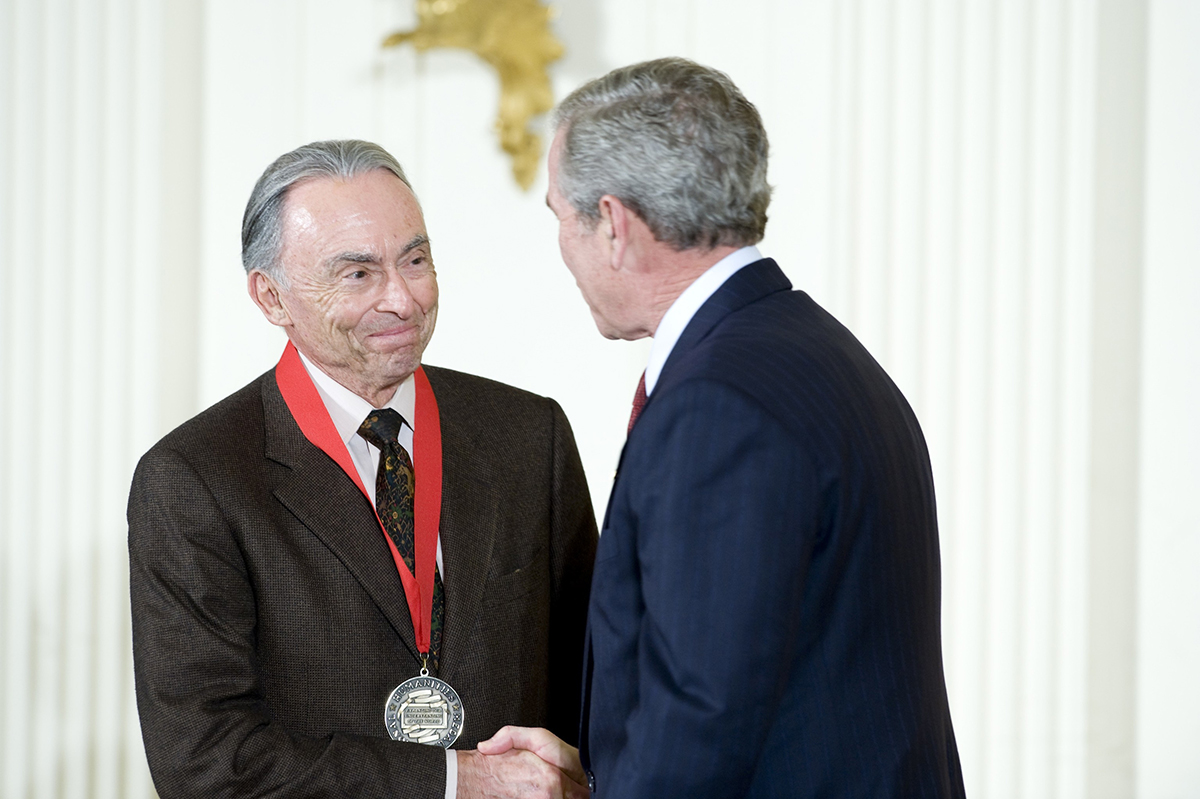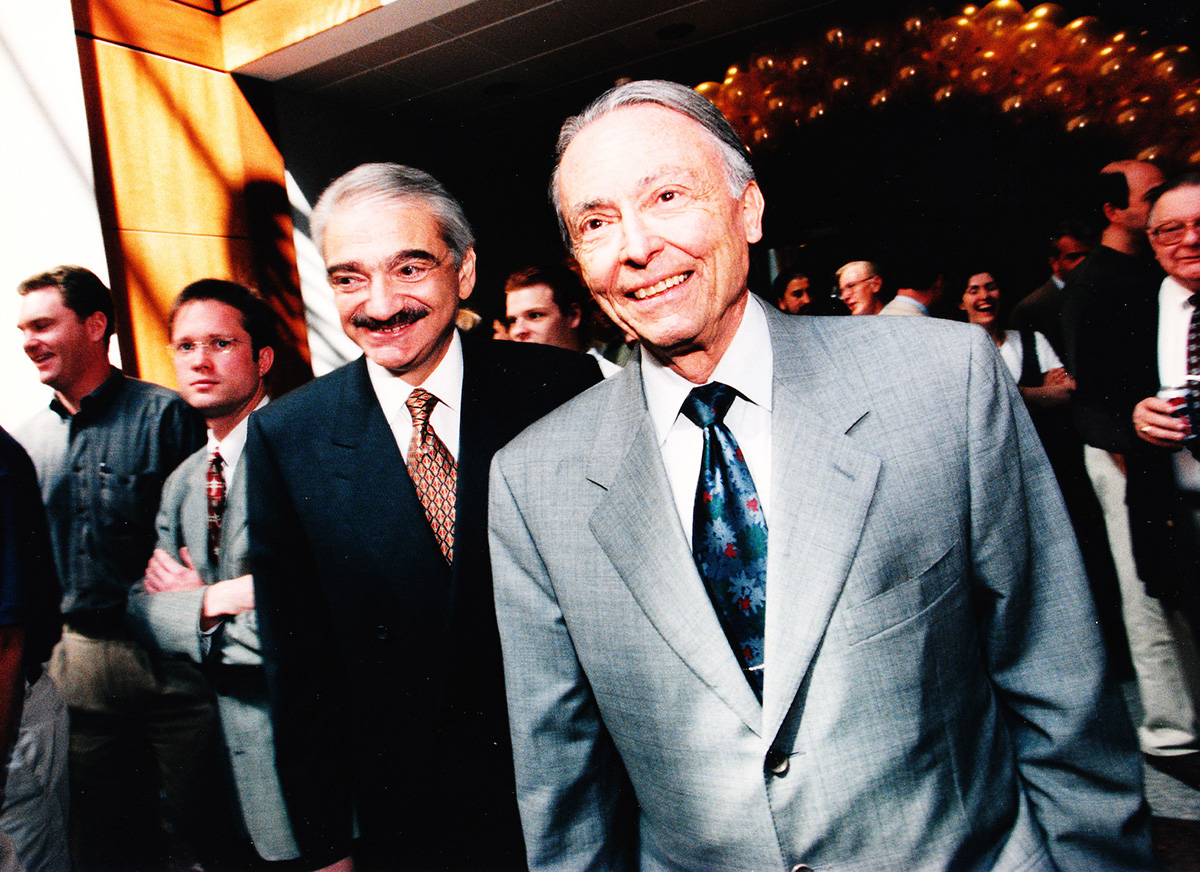Celebrating Robert H. Smith ’50
1928-2009
 Robert H. Smith walked through the corridors of Van Munching Hall more often than most students realized. Trim and silver-haired, the man who named the Smith School was unassuming, genial and genuinely interested in everyone he met. His enormous natural talents took him to the top of his profession. His passionate beliefs in the goodness of our country, the potential of every person and the importance of investing in excellence made him one of the most influential philanthropists the Washington, D.C., region has ever known.
Robert H. Smith walked through the corridors of Van Munching Hall more often than most students realized. Trim and silver-haired, the man who named the Smith School was unassuming, genial and genuinely interested in everyone he met. His enormous natural talents took him to the top of his profession. His passionate beliefs in the goodness of our country, the potential of every person and the importance of investing in excellence made him one of the most influential philanthropists the Washington, D.C., region has ever known.
The Washington Post described him as a “visionary builder-developer” who “transformed more than just the local landscape.” Mr. Smith gave away hundreds of millions of dollars to support education, healthcare and the arts; beautify and preserve important historic sites; and assure the continuity of Judaism. At the time of his passing, he was also the University of Maryland’s single greatest benefactor. “Bob Smith is the greatest philanthropic supporter of public education in the history of the state of Maryland," former University of Maryland President C.D. Mote, Jr., has said.
Meet Bob Smith
Robert Hilton Smith was born July 21, 1928, in Brooklyn, New York. His family moved to Washington in 1942, and he graduated from Anacostia High School in 1946, the same year his father formed the Charles E. Smith Construction Co. He joined the firm after graduating from the University of Maryland in 1950.
As the child of hardworking Russian immigrants, Mr. Smith grew up with big dreams. Mr. Smith took over his father's business, Charles E. Smith Construction Inc., in 1967 and ran the company for more than three decades with his brother-in-law, Robert P. Kogod. They transformed the family-owned construction firm into a multifaceted real estate empire, building office complexes, apartment houses and eventually becoming Washington's largest commercial real estate landlords.
Among his successful ventures as a builder-developer is the vast and sprawling Crystal City complex in Arlington, Va. When Mr. Smith first surveyed the area in 1961, it was a dilapidated, somewhat desolate neighborhood far removed from the District's corridors of power. But Mr. Smith had the gift: he could see great potential where others saw only a bare piece of ground. It was a gift that would serve him well in both his career and his philanthropic pursuits.
It is your privilege as a human being to identify with causes beyond yourself, to contribute to your community, and make a difference to the world around you.
Setting a Course for the Future
He also had a knack for making smart choices. By the time he was 15 or 16 years old, Mr. Smith knew he wanted to be a builder-developer. So he enrolled in the university’s School of Engineering, thinking that would be the best preparation for his future career. A mechanical drawing course soon proved that his gifts and talents lay elsewhere. He did have an aptitude for accounting and finance, though, so he transferred to the business school. “I figured a background in business would serve me well, and I could always hire engineers,” he said.
Mr. Smith’s stratospheric success gave him the wherewithal to hire many engineers. That success also allowed him to make significant investments in art and music, education, healthcare, Jewish cultural organizations and important monuments of our nation’s history. Mr. Smith took his philanthropy seriously, concentrating on giving the transformational gift—the one that would enable the recipient organization to move to the next level, achieve the next big goal, create the next big idea. He was a founding partner of the Newseum in Washington, D.C. At Lincoln’s Cottage he funded an award-winning and fantastically innovative interactive exhibit.

And at the Smith School he made possible a number of strategic initiatives that have helped to set our course for years to come. Several faculty chairs bear the Smith name—endowments that help us compete for top faculty with the academically elite private schools. He gave generously to our doctoral program, allowing us to attract the best up-and-coming scholars. He helped fund global initiatives that send our students abroad during winter term and summer break, giving them a first-hand taste of what it means to be a global citizen. He launched the Alumni Career Services program, and his final gift was to improve services and facilities at the Office of Career Services.
When Mr. Smith committed to a project he was keenly interested in every detail—particularly ones that would enhance the student experience. He wanted to know about the finishes for the interiors, the kinds of trees in the landscape, the particulars of the coursework. Nothing but the best would do. He wanted everything he was involved in to be the highest quality possible—as excellent as it was possible to be.
This wasn’t a self-centered or self-aggrandizing interest. Mr. Smith was convinced that his funds, invested wisely, could make the world a better place. He wanted to invest in ways that would challenge and inspire the institutions he partnered with the best they could be.
“I am a firm believer that life is a two-way street,” he told Smith Business magazine in 2004. “Giving back to institutions you believe in is part of that philosophy. You don't have to give millions of dollars. The important point is to participate at the level you are comfortable with. Financial success is not a destination; it is only part of the journey, enabling you to reach your ultimate fulfillment, and that is to give something back to help make a difference.”

There is still much to do in our pursuit of excellence, and we are committed to the task of sustaining his vision and becoming one of the best business schools in the world. We are honored to be part of his legacy—a legacy that is reflected in each and every student. He had an unwavering belief in the potential of Smith School students to do what he himself had done: pursue their careers with integrity; succeed beyond their wildest dreams; and go on to give back in ways that would make the world a better place forever.
You may have never met Bob Smith, but he also had a dream and a charge for humanity. In his commencement address to the graduating class of 2008, Mr. Smith said, “It is everyone’s duty to be useful and fulfilled. It is your privilege as a human being to identify with causes beyond yourself, to contribute to your community, and make a difference to the world around you. The world today is very different from the day I graduated from this school, and it is changing almost too swiftly to comprehend. It is vital that you become involved, that you take an active part in shaping the world which you are going to inherit from my generation.”
“I’ve taken the opportunity to be involved with this school because it is my dream that each student who graduates from it will be an ambitious dreamer, a courageous risk-taker, and a principled, ethical leader, who will work to make this world a better place,” Mr. Smith said to the graduates of 2008. “It is a great honor and a privilege for me to have my name associated with yours, as you go out into the world to pursue your dreams.”
It is a great honor for us, the Smith School, to carry his name into the future.